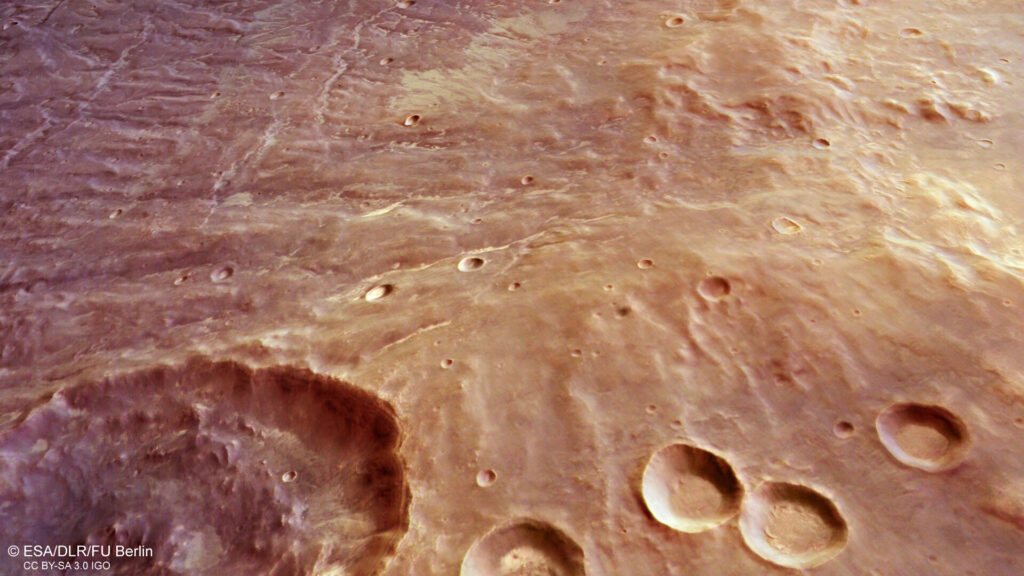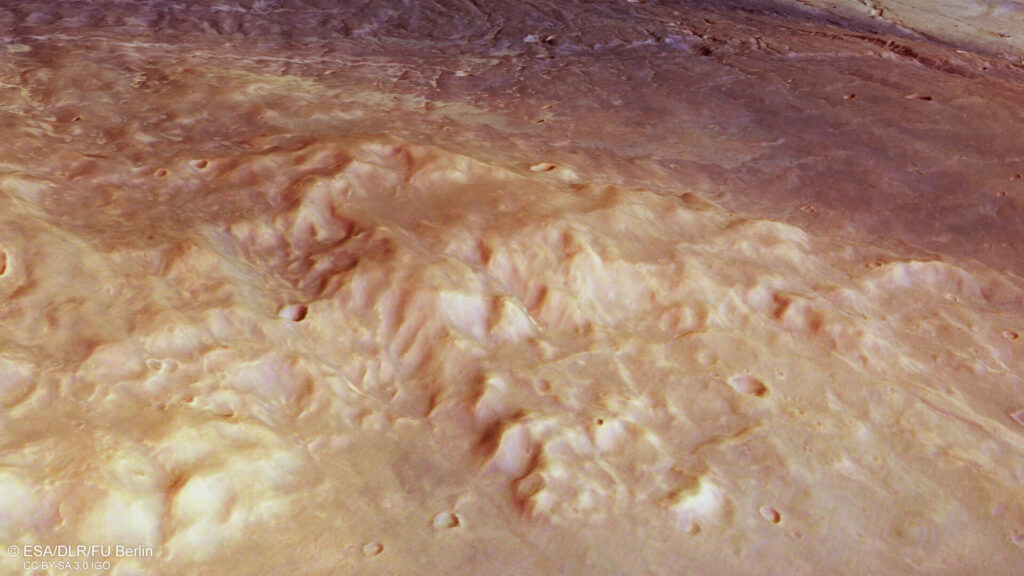The Mars Express mission support group has published a new series of images of the Red Planet. This time they demonstrate a region known as Thaumasia Planum.

Water and tectonics of ancient Mars
Thaumasia Planum is a volcanic highlands located in the Southern Hemisphere of Mars. The height difference between its highest and lowest sections is 4.5 km. This region has hardly changed in the last four billion years. Thus, it allows us to understand what the young Mars looked like.


According to the researchers, the two main factors that influenced the formation of Thaumasia Planum are tectonic processes and water. Although Mars does not show signs of active tectonics now, this has not always been the case. The processes taking place in the interior of the planet, in particular, led to the formation of a series of faults known as Nectaris Fossae. They can be seen in the center of the image, they are filled with light dust. According to scientists, the formation of faults was associated with the formation of the Mariner Valley — a colossal system of canyons located to the north of this region.

The second factor that influenced the appearance of this region is water. Its streams cut through many valleys, which can be seen in the image. Some of them are wide and do not differ in great depth, while others are much deeper.
Traces of ancient eruptions
As for the base of the highlands, it is a layer of lava deposits several kilometers thick. It was formed at the dawn of the existence of Mars, when its volcanoes were actively erupting. As the huge lava flows cooled and solidified on the unstable, moving ground, they compacted, resulting in the formation of “wrinkled ridges”. One of them is visible in the lower part of the image in the form of an unstable diagonal line drawn on the surface.

In the future, these lava deposits were covered with volcanic ash and dust, and then streams of water cut through a series of valleys in them. However, the source of its origin is still unclear to scientists. Since valleys appeared at different heights, it was possible that water seeped through the subsurface layers of Mars.
Earlier we talked about the fact that ancient Mars could be covered by an ocean up to 300 meters deep.
According to https://www.esa.int
Follow us on Twitter to get the most interesting space news in time
https://twitter.com/ust_magazine
